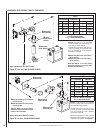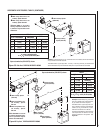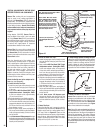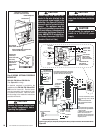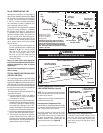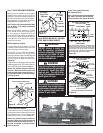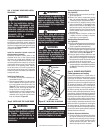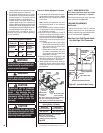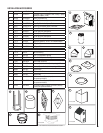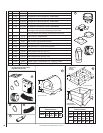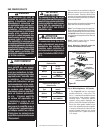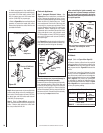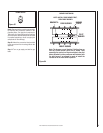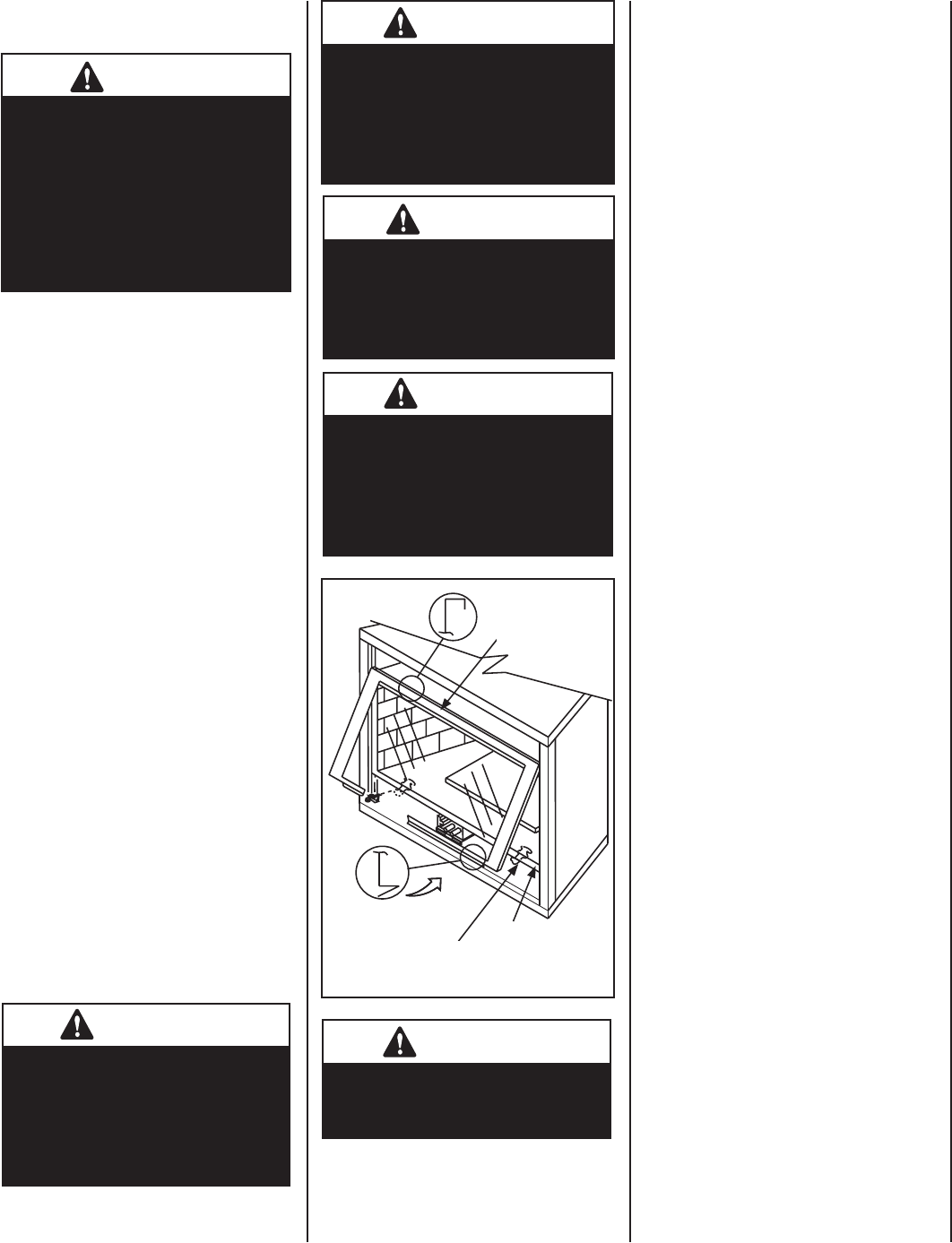
NOTE: DIAGRAMS & ILLUSTRATIONS ARE NOT TO SCALE.
29
The log set foam package is located in the fi rebox
and the bags of decorative volcanic stone and
the glowing embers (rockwool) are located in
the control compartment. Refer to the following
information and Figures 52 and 54 for detailed
placement instructions.
Install the decorative volcanic stone and
glowing embers (rockwool):
Spread the decorative volcanic stone on the
simulated brick fl oor of the fi rebox around
the burners to simulate ashes. Maintain a 1/2
inch (13 mm) gap between the bottom of the
horizontal grate section and the top of the pile
of decorative volcanic stone. Place a few dime-
sized pieces of the glowing ember material
on the pan burner in front of the burned out
area on both sides of the log set. The glowing
embers may touch one another, but should not
overlap each other.
Install the unitized log set:
a. The bottom of the log set is notched to ac-
commodate the pilot.
b. Place the log set so that the four inner notches
on the underside of the log set fi t over the
four risers located on the burner ends. See
Figure 52. This procedure is accomplished
primarily by feel, as the log set masks the
burner risers as it is being installed.
c. As a fi nal check for correct log set placement,
check that the four outer notches on the
underside of the log set fi t over the burner
tines as indicated in Figure 52.
WARNING
If logs are not installed according
to the log installation instruc-
tions, fl ame impingement and
improper combustion could
occur and result in soot and/or
excessive production of carbon
monoxide (CO), a colorless,
odorless, toxic gas.
LOG & VOLCANIC STONE INSTALLATION
PROCEDURE:
Step 9. INSTALLING THE GLASS DOOR
WARNING
Handle this glass with extreme
care! Tempered glass is suscep-
tible to damage – do not scratch
or handle roughly while reinstall-
ing the glass door frame.
WARNING
Do not operate appliance with
the glass front removed, cracked
or broken. Replacement of
the glass should be done by a
licensed or qualifi ed service
technician.
WARNING
Do not attempt to substitute the
materials used on this door, or
replace cracked or broken glass
with any materials other than
those provided by the appliance
manufacturer.
WARNING
The glass door of this appli-
ance must only be replaced as a
complete unit as provided by the
manufacturer. Do not attempt to
replace broken, cracked or chipped
glass separately.
WARNING
Do not attempt to touch the front
enclosure glass with your hands
while the fi replace is in use.
Removing Glass Enclosure Panels
(see Figure 55)
1. Remove the top louver assembly by lifting it
up and pulling it out.
2. Remove the control compartment access
door (see removal instructions on Page 27
- Removing Control Compartment Door).
3. Locate the two (2) latches at the top of the
control compartment. To disengage the two
latches from the bottom vee-fl ange of the
glass enclosure panel, reach for the handles
located towards the back of the latches and
pull the handles down toward the front of
the appliance.
4. Swing the bottom of the door out and raise
it slightly to lift the top fl ange of the door
frame away from the appliance.
Installing Glass Enclosure Panels
(see Figure 55)
1. Visually inspect the gasket on the backside of the
glass panel. The gasket surface must be clean,
free of irregularities and seated fi rmly.
2. Position the glass enclosure panel in front of
the fi rebox opening at a 45 degree angle and
engage the top fl ange over the lip at the top
of the fi rebox opening. See Figure 55.
3. Swing the glass enclosure panel down and
back. Ensure the gasket seats evenly as the
panel draws shut. Engage the Vee-fl ange at
the bottom of the panel with the latches and
close the latches to secure the panel.
4. Reinstall top louver assembly and control
compartment door see installation instructions
on Page 27, Reinstalling Control Compart-
ment Door).
Step 10. BURNER ADJUSTMENTS
Flame Appearance and sooting
Proper fl ame appearance is a fl ame which is
blue at the base and becomes yellowish-orange
in the body of the fl ame. When the appliance
is fi rst lit, the entire fl ame may be blue and will
gradually turn yellowish-orange during the fi rst
15 minutes of operation. If after a short period
the fl ame stays lowered blue, or if the fl ame is
orange with evidence of sooting (black tip), the
air shutter opening may need to be adjusted.
If the air shutter openings closed too far, sooting
may develop. Sooting is indicated by black puffs
developing at the tips of very long orange fl ames.
Sooting results in black deposits forming on the
logs, appliance inside surfaces and on exterior
surfaces adjacent to the vent termination. Soot-
ing is caused by incomplete combustion in the
fl ames and lack of combustion air entering the
air shutter opening. To achieve a warm yellow-
ish-orange fl ame with an orange body that does
not soot, the shutter opening must be adjusted
between these two extremes.
Air Shutter Adjustment Guidelines
• If there is smoke or soot present, fi rst check
the log set positioning to ensure that the
fl ames are not impinging on any of the logs.
If the log set is properly positioned and a
sooting condition still exists, then the air
shutter opening should be increased.
Figure 55 - INSTALLING GLASS DOOR
Top Flange on
Glass Door
Bottom Vee-fl ange
Glass Door
Glass Door Latch
Glass Door
Firebox Floor




